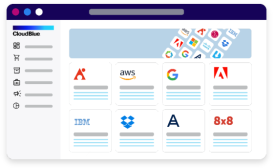Gross margin is a financial metric that represents the percentage of revenue that remains after deducting the direct costs of producing or delivering a product or service i.e. the difference between revenue and the cost of goods sold (COGS) or cost of services provided.
In SaaS, gross margin is an important metric that measures profitability. To calculate the gross margin for a SaaS company, the company must subtract the direct costs associated with delivering the service, such as the costs of hosting, infrastructure, and customer support, from the revenue generated by the service. The resulting figure is then divided by revenue, and the resulting percentage is the gross margin.
The importance of gross margin for SaaS companies lies in its ability to help the company understand the financial health of the business. A high gross margin indicates that the company is generating significant revenue while maintaining low costs, which can lead to higher profitability and sustained growth. In contrast, a low gross margin may suggest that the company is not effectively managing its costs, which can lead to financial challenges and an inability to scale the business.
Gross margin also helps SaaS companies determine their pricing strategy, since the cost of goods sold is a critical component in determining the profitability of each sale. A high gross margin can allow a SaaS company to price their service competitively while still maintaining profitability, while a low gross margin may force a company to increase prices or find ways to reduce costs.













